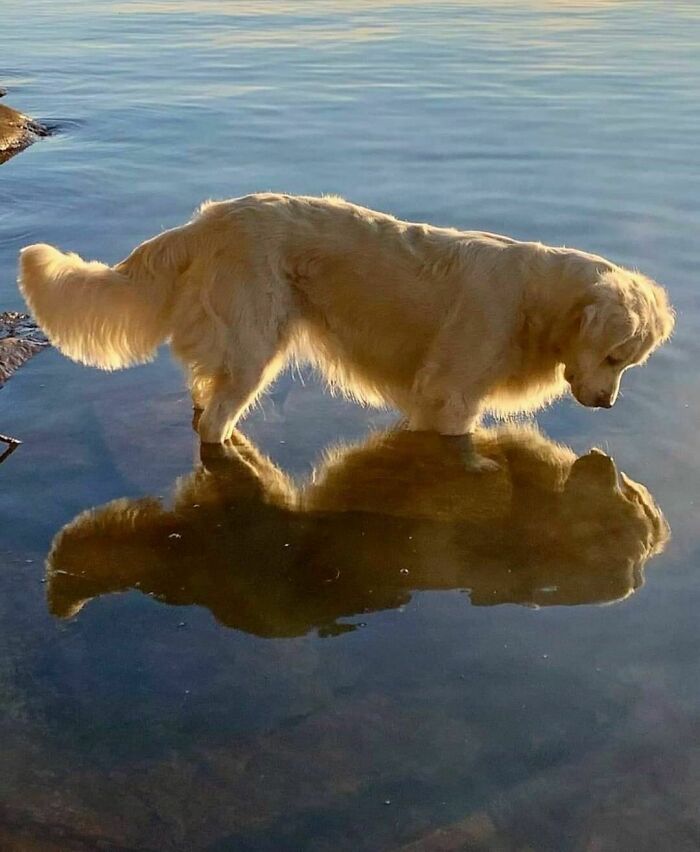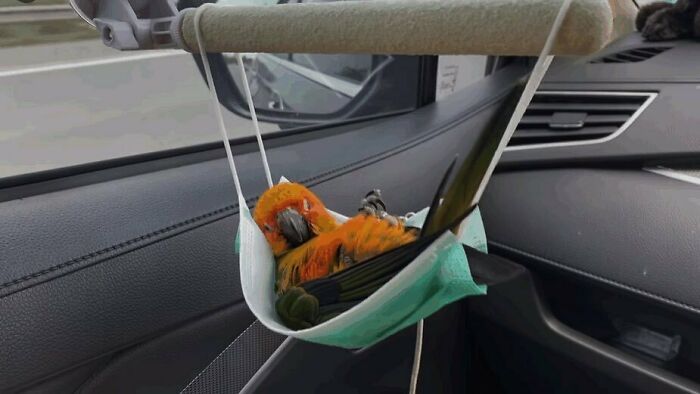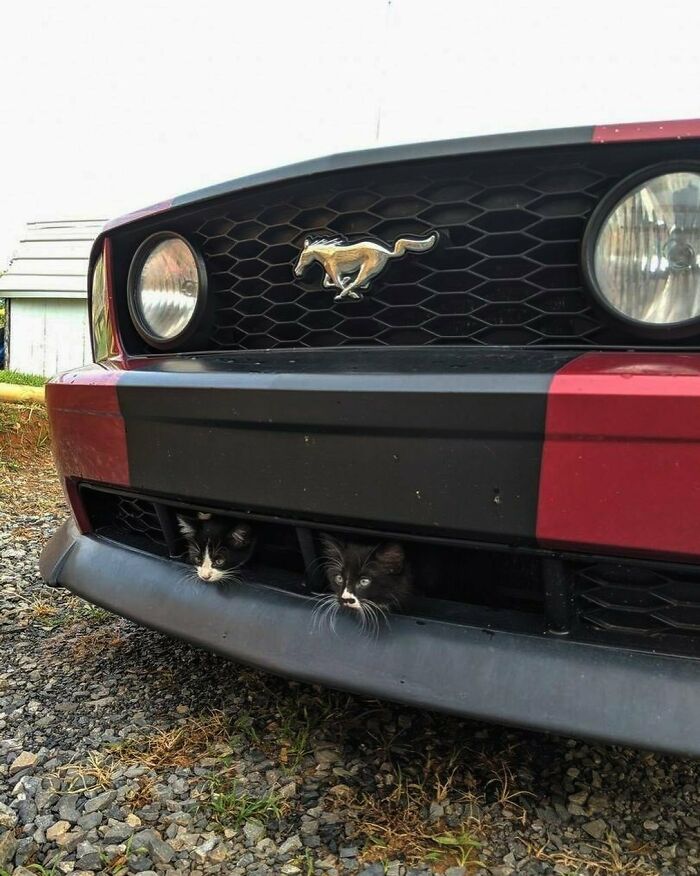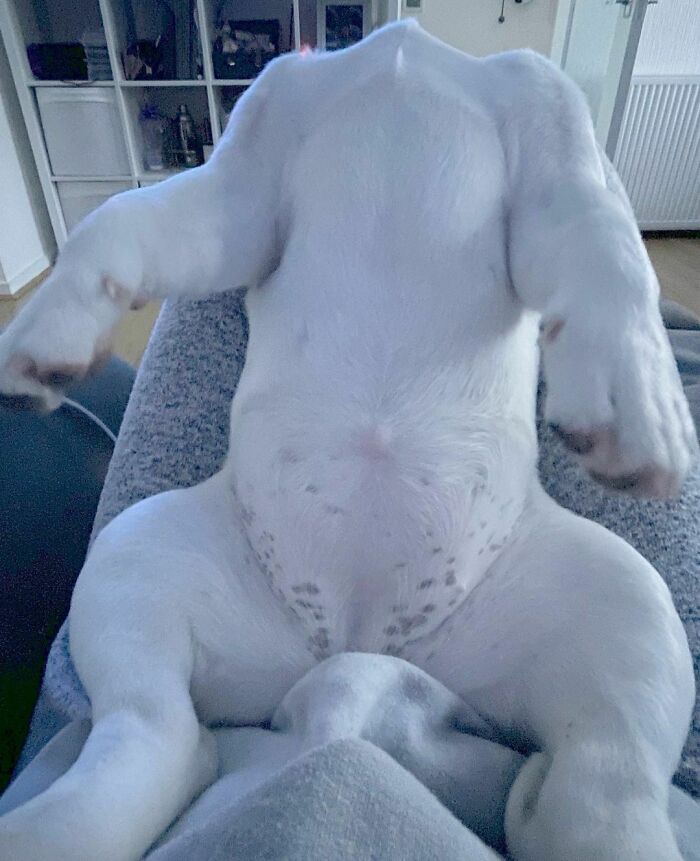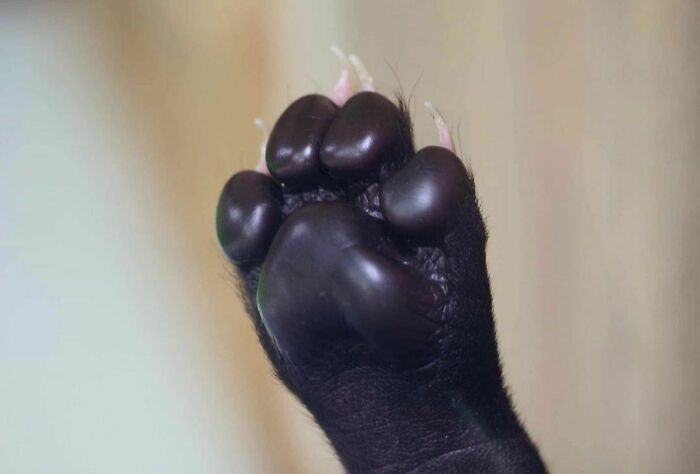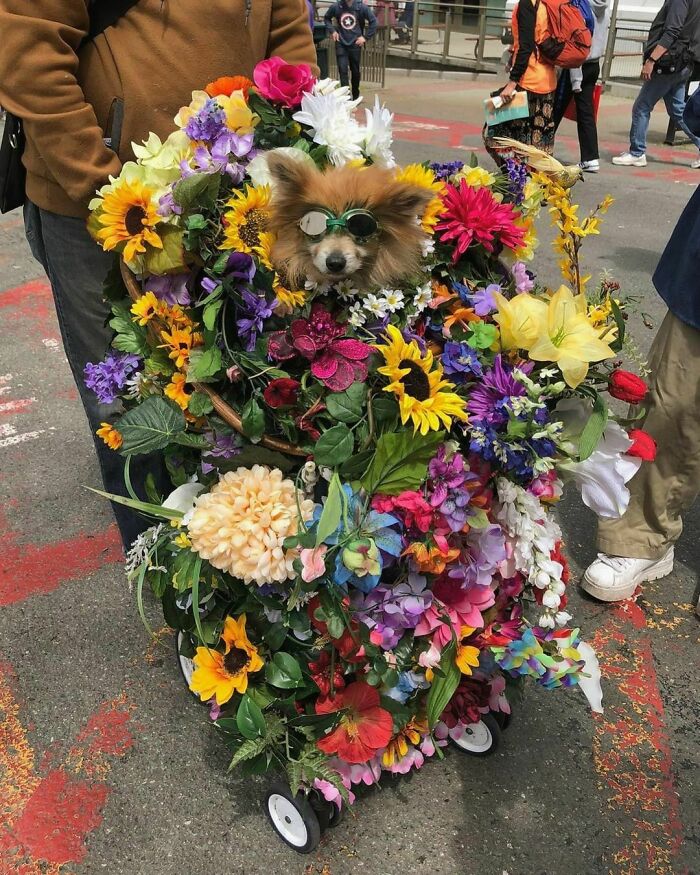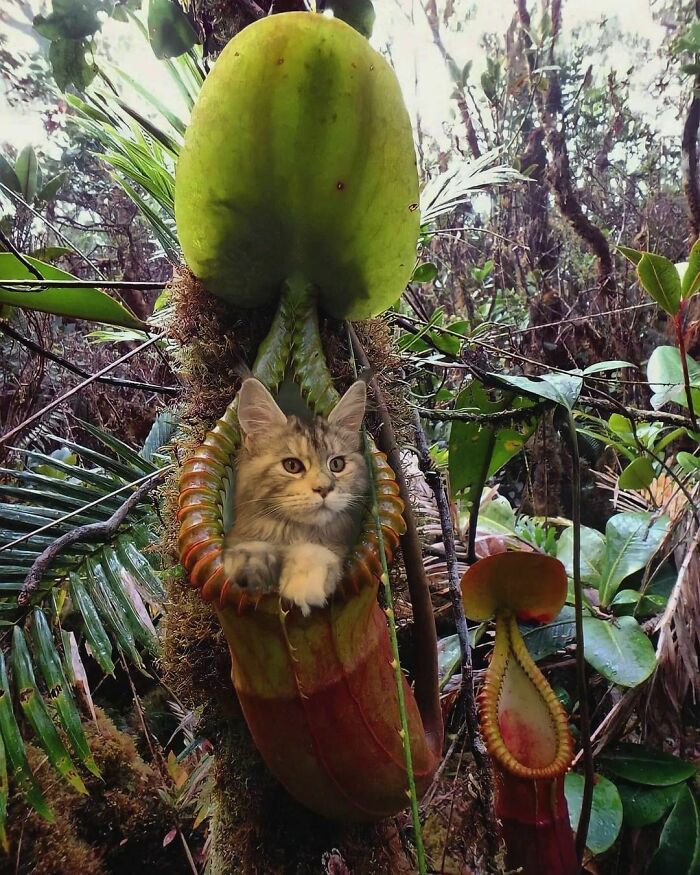
50 Hard To Explain But Impossible Not To Love Animal Pics, As Shared By This IG Page (New Pics)
When your friend walks out of the toilet with his leather pants hanging on his knees and his crotch covered in white powder and lotion, he can at least explain that he couldn't pull them back up his sweaty legs and used everything he found in the cupboards in the last futile attempt to do so.
But when you witness an animal end up in a confusing predicament, it usually raises more questions than provides answers. After all, they don't speak human and can't tell you what happened. At least, not to my knowledge. And there's an Instagram account that perfectly highlights this, let's call it, difference.
It's called 'Doggo Taxi' and it shares random and oftentimes nonsensical animal pictures without providing any context. A cat judging a crayon drawing of itself? Sure. A dog refusing to give up the swings for a kid? You bet. Continue scrolling to check out its latest posts, and for more hilariously ridiculous situations, fire up our earlier publications on 'Doggo Taxi' here and here.
More info: Instagram
This post may include affiliate links.
As amusing as these pictures are, if you want to take one of your own pet, there are some things you need to keep in mind if you want it to turn out a bit better.
Award-winning pet photographer Alexandra Robins, who is based in Wiltshire, United Kingdom, told Bored Panda that everything starts with your energy.
"Having your pet model looking their best, happy, and engaging with the camera really makes for a great photo. I always ask clients to make sure their pet is groomed and ready to shine in their photos. Giving them their favorite treats, playing with toys, and giving your pet affection will help keep them waggy-tailed and those ears pricked up," she said.
Robins said that being mindful of your background and planning where you will take your pet portraits will make a huge difference to your photos.
"Cluttered and overly busy backgrounds will distract the viewer from your pet and will likely ruin what could have been a really wonderful photo all around."
"Keep locations simple, tidy, and well-lit. You could also take it a step further and seek out beautiful nature spots or picturesque cityscapes for your pet portrait photos. That being said, sometimes if the content is really great, whether it's a clever use of props, the pose, or expression, it can surpass a messy background! Sometimes it's just important to capture the moment before it passes," the photographer explained.
"One of the biggest mistakes I see in the photos people have taken of their pets is when they are taking them from above and not from the pet's level," Robins added. "Although this can occasionally work, especially if the pet has eye contact with the camera, taking photos from different and lower angles will help you determine which might be the most flattering for your pet."
"Not being aware of the lighting is also a common one. Sometimes it results in uneven and harsh shadows across the pet's face or their eyes not being visible, which often spoils a lovely photo. Photograph your pet in soft, even lighting where possible."
He/she will surely purr to you, his/her mother I don't know exactly. :)
Load More Replies..."Now remember, we may not see anything. Leopards are notoriously hard to fi--oh."
I've seen cow catchers on old trains, but this cat catcher takes things to a whole new realm.1
We probably won't see any but you never kn...oh. oops. Stay in the car kids. Stay in the car!
Uh......this does not look like a live cat. The eyes look dead, and it looks as though the animal was positioned there by the hunter. It appears as though there is blood coming out of it's mouth. Not a pleasant picture for me.
"I thought you were going to put a jaguar badge on the hood of your car"
However, even if you do your homework and put in the effort, that doesn't mean that your pet won't decide to troll you when you're holding the camera. These animals certainly appear to be doing it on purpose. Which begs the question, are humans really the only species that find humor in life?
The tricky part is that philosophers and psychologists have long struggled to come up with an exact definition of what constitutes humor in the first place.
They've presented numerous theories over the years, one of the most popular being the "incongruity theory" of humor. At its basic level, this theory states that humor arises when there's an inconsistency between what one expects to happen and what actually happens — and this includes comedic tools like puns, irony, and twists of fate.
According to this definition, it sounds like the vast majority of animals probably don't have a sense of humor, as they lack the cognitive abilities that would allow them to identify such inconsistencies.
One known exception is Koko, the famous western lowland gorilla who understood more than 1,000 American Sign Language signs and 2,000 spoken English words.
This clever primate was known not only to use language to humorous effect by playing with different meanings of the same word, but also to understand slapstick comedy — she reportedly signed the word "chase" after tying her trainer's shoelaces together and made laughing noises at her trainer's clumsiness.
But there are various issues with the incongruity theory of humor and related theories, including the fact that they fail to take into account that jokes with predictable punch lines can also be funny and that certain incongruous things aren't funny.
Furthermore, they also seem to evade the primary reasons why we laugh: being tickled by a friend or family member.
A few psychologists recently came up with a new theory. They propose that humor arises from the so-called benign violation or "something that threatens a person’s well-being, identity or normative belief structure but that simultaneously seems okay," they wrote in a paper about the theory.
Benign violation can explain why a number of things make us laugh, including being tickled: that is, tickling benignly invades someone's physical space.
You can't tickle yourself because that doesn't constitute a violation and complete strangers can't tickle you to the point of laughter because you won't perceive it as a benign act.
Following this line of thinking, various animals do, in fact, have "humor," if only they can be tickled.
Research shows us that our primate relatives — chimpanzees, bonobos, gorillas, and orangutans — all produce laughter-like sounds when tickled (as well as when they're wrestling and play-chasing).
This also suggests that humor and our ability to laugh likely came from humans' and great apes' last common ancestor.
Additionally, another study discovered that chimpanzees can make silent "laugh faces" just like humans.
Dogs are also known to have a kind of panting laugh and play face that's suggestive of humor.
So who knows, maybe these animals are actually laughing at us? Or at least with us?
These ronin look calm now but just wait till rhus episodes big fight scene begins.
"So I grab the mice like this...you see...with my talons, and then I fly off and eat them!"
Wow, Why Did They Photoshop Some Of These, And How Is An Animal Getting Hurt "Amusing"
Wow, Why Did They Photoshop Some Of These, And How Is An Animal Getting Hurt "Amusing"

 Dark Mode
Dark Mode 

 No fees, cancel anytime
No fees, cancel anytime 




















